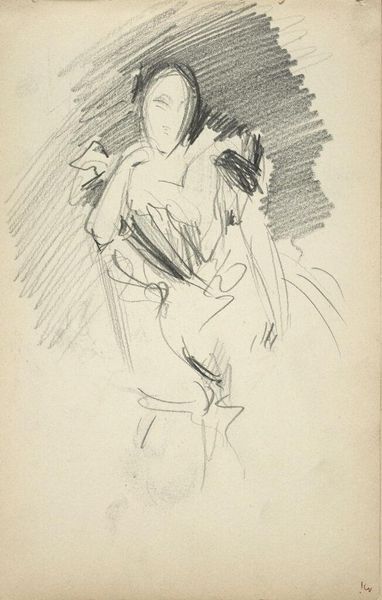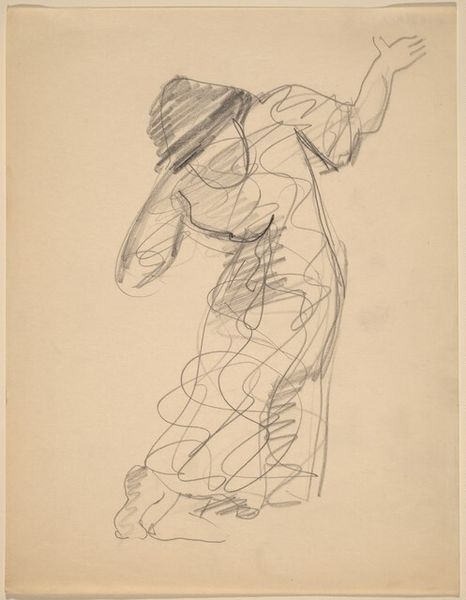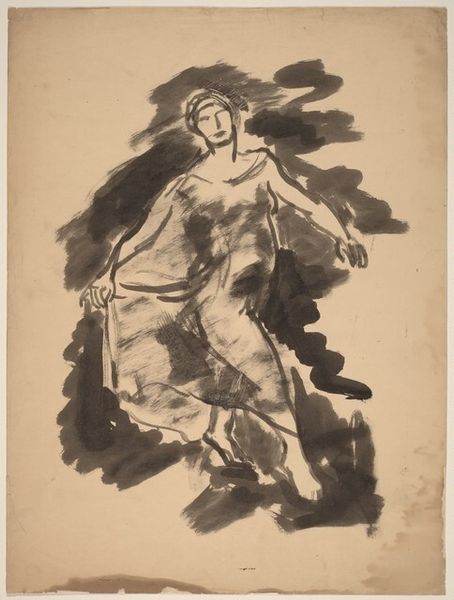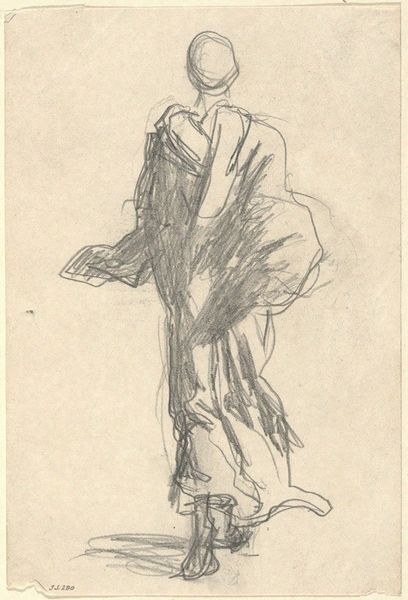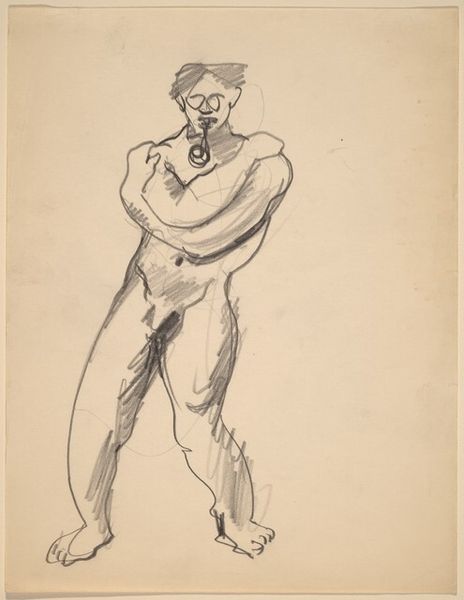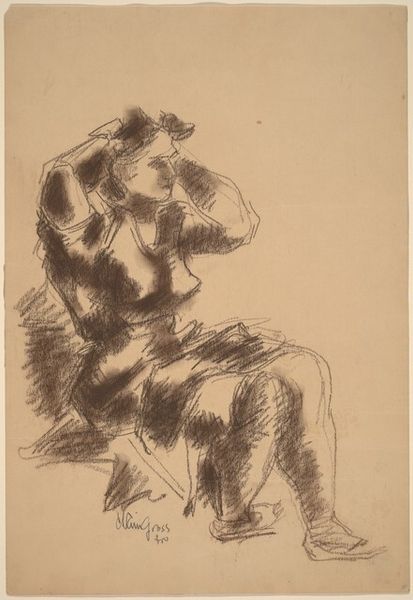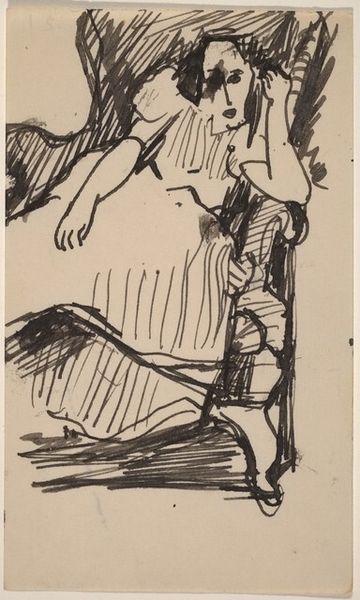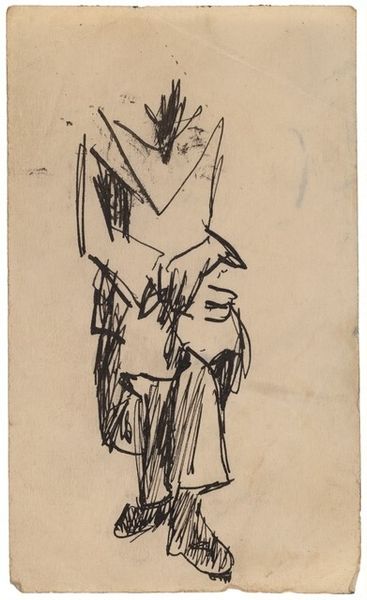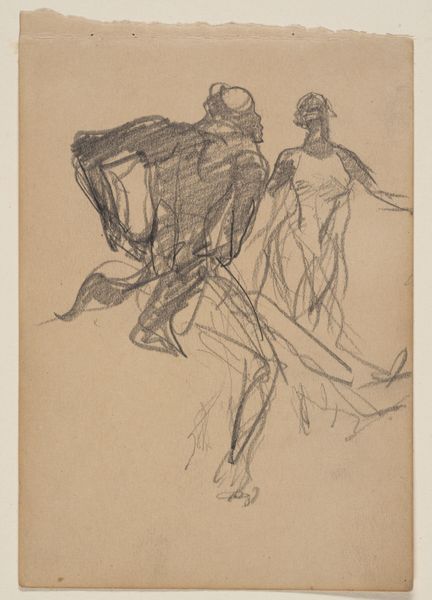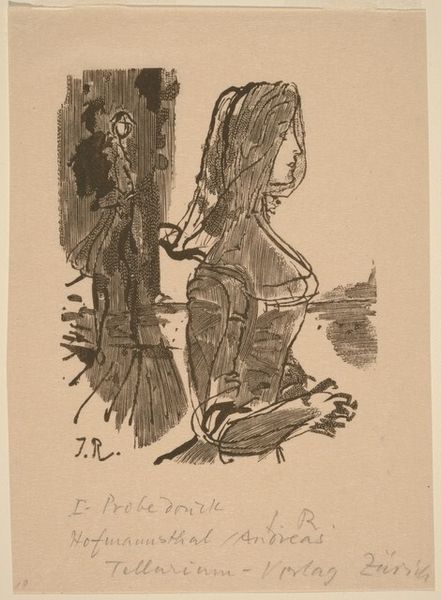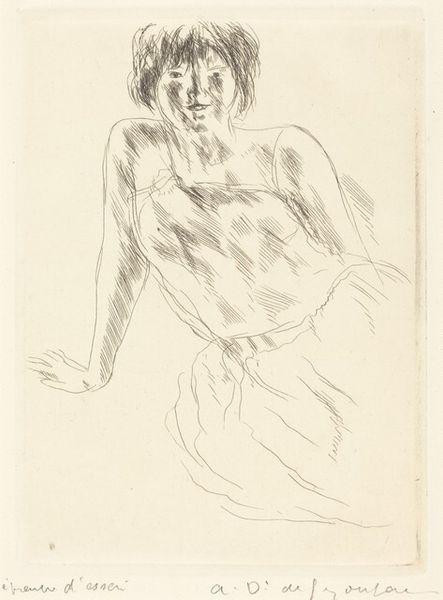
Illustration to Novalis, "Hymmen an die NachtRosenhammer" Possibly 1942
0:00
0:00
Copyright: National Gallery of Art: CC0 1.0
Curator: Imre Reiner's "Illustration to Novalis, Hymnen an die Nacht, Rosenhammer," possibly created around 1942, uses ink in a line drawing, seemingly a pen sketch, to evoke a figure in motion. It's evocative, wouldn't you agree? Editor: It certainly commands attention. At first glance, I’m struck by its ghostly quality. There's a fragility to the lines, as if the figure might dissipate at any moment. Is that the night from Novalis' poem taking human shape? Curator: That's the allure of symbolism, isn't it? It whispers rather than shouts. Reiner, channeling Novalis’s Romanticism, probably aimed to visualise the unseen, the emotive core of the "Hymns to the Night." I sense a spiritual journey, an embrace of darkness as a gateway to enlightenment. The single, elegant foot on a semi-circle gives the work dynamism, even hope. Editor: It's interesting you see hope. Given its context, potentially wartime, this could also be read as a stark expression of vulnerability, or perhaps even mourning. The flowing garment and gestural marks might suggest someone fleeing, seeking refuge from encroaching shadows, personal or collective. Are there other Reiner pieces we could compare it to in order to shed more light on his use of this motif and symbolism? Curator: The quest for context is critical. His background informs my intuitive sense: Reiner fled Nazi Germany in the 1930s. The émigré experience would've undoubtedly infused his art with layers of yearning and displacement. Editor: Exactly! Understanding that forced migration shifts the perspective. We’re no longer just observing aesthetics. We’re engaging with resistance, with survival. Even the choice of ink, a relatively inexpensive medium, speaks to constraints, resourcefulness, and silent protest during that time period. Curator: Beautifully put. The artist's touch, trembling, intimate; ink bleeds into something deeper. Perhaps all art made during turmoil becomes an unintentional resistance— a refusal to be silenced. Editor: Yes, a potent reminder that art always speaks to power, or against it. Even in whispers. Reflecting on it now, that gestural foot becomes not just a symbol of elegant dance or delicate hope, but a signifier of a courageous, and perhaps defiant, march into the unknown.
Comments
No comments
Be the first to comment and join the conversation on the ultimate creative platform.
